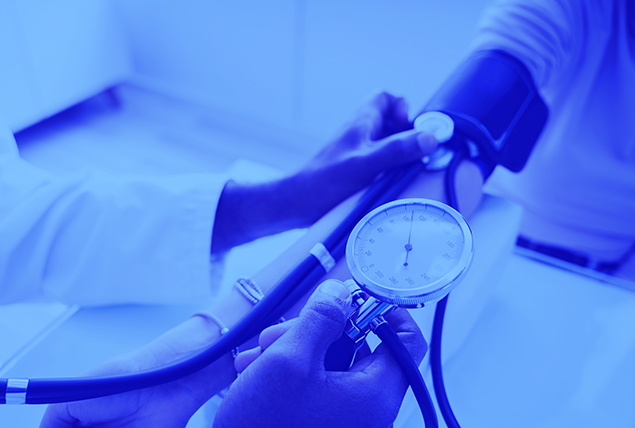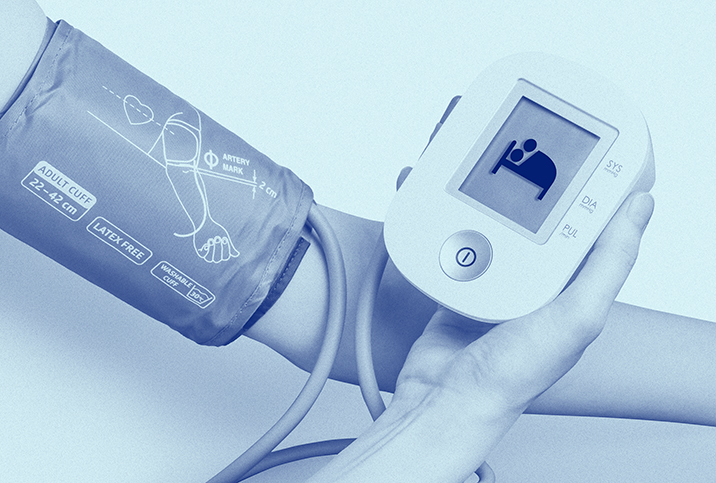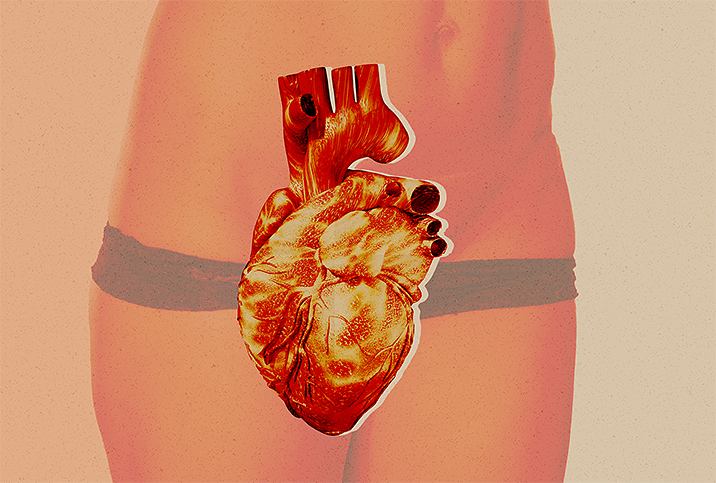Normal Blood Pressure Is Critical to Your Health

May is High Blood Pressure Education Month, and May 17 is World Hypertension Day.
To commemorate the month and educate readers, Giddy will present three exclusive interviews to provide details about why this is such an important issue.
Nearly half of all adults in the United States (47 percent) have high blood pressure—also known as hypertension—according to the Centers for Disease Control and Prevention (CDC). Known as the "silent killer" because there are often no symptoms, high blood pressure increases people's risk for heart disease and stroke.
Oscar Cingolani, M.D., sat down for an interview about this common and potentially dangerous condition. Cingolani is an associate professor at The Johns Hopkins University School of Medicine, Division of Cardiology in Baltimore. He is also the associate director of The Johns Hopkins Hospital Coronary Care Unit, director of the Hypertension Center and a member of the Echocardiography Lab and Outpatient Cardiology Clinic.
Editor's note: This interview has been edited for length and clarity.
Why is blood pressure so important?
Cingolani: Normal blood pressure is considered less than 120 mmHg (millimeters of mercury) and less than 80 mmHg. That's the systolic and diastolic blood pressure, which is the high and the low. Hypertension is now defined as blood pressure higher than 130/80 on average taken on two different occasions, at least.
Normally, high blood pressure produces an impact on the arteries of our kidneys, our heart and our brain, and it accelerates atherosclerosis. Those plaques in atherosclerosis can break more often and produce heart attacks or strokes. It's the number one killer because it's silent. It's known as the "silent killer" because you don't feel it.
If you don't measure [blood pressure], you don't know you have [hypertension], which is a problem because we know only half of adults with high blood pressure are aware they have it. It's one of the most controllable or modifiable risk factors to prevent stroke and heart attacks.
What can we do to manage blood pressure?
First of all: awareness. The population needs to be aware that even if they don't feel anything, they should learn how to measure their blood pressure. Ideally, you can get a cheap blood pressure machine and take it at home.
Once you identify you have high blood pressure, then you need to go to your doctor and have what we call a "risk stratification." This includes ensuring you don't have any other potential risk factors, such as obesity, diabetes, hypercholesterolemia, smoking and sedentarism. If you have one or many of those, you can start by modifying that, plus/minus adding a medication.
Sometimes, if you have what we call hypertension stage 1, and you don't have many other risk factors, you can start by losing weight if you're overweight, eating low amounts of salt and exercising. That is sometimes the equivalent of giving pharmacologic treatment. We tend to wait three to six months for those nonpharmacologic lifestyle changes. After that, if not, we put them on medication.
We know that by treating blood pressure, either pharmacologically with medications or with both nonpharmacologic measurements plus medications, we can make a huge impact. We can lower the chances of having heart failure by half, and strokes and heart attacks by 20 percent to 40 percent, with every 10 mmHg we drop the blood pressure.
How do you make a diagnosis of hypertension?
Ideally, the blood pressure needs to be measured under baseline conditions. An average of three readings, separated by two or three weeks. You have to be persistently elevated on at least two occasions, separated by a few days. And nobody knows exactly how much.
Between two or three weeks in case somebody is going through a stressful moment is a good idea. And that's a very important point because, at our Hypertension Center, we often see patients who were labeled as hypertensive based on a single blood pressure reading that was high, but that was under specific circumstances.
For example, if you have pain and you go to the hospital, your blood pressure is going to be high because you're having pain. That doesn't count and is reactive. If I argue with my son about his grades in school, of course, my blood pressure is going to be high, but that doesn't mean I'm hypertensive.
Normal variations of blood pressure exist when we are under stress, when we are sick or when we are having pain.
About 30 percent to 40 percent of patients have what we call the "white coat effect," which is when you see the doctor and your blood pressure is high. We recommend those patients get a home blood pressure machine and learn how to properly measure at home.
For some patients, we do 24-hour ambulatory blood pressure monitoring, which is a cuff and a little machine hanging with a belt. That takes blood pressure every half an hour during the day and every hour during nighttime, and it averages everything. It's important to establish the diagnosis first before jumping into treatment, because once you start treatment it's forever. You can rarely scale down after you start treatment for hypertension.
What's the difference between systolic and diastolic blood pressure?
When the heart pumps blood, you have an upstroke in blood pressure, that's the systolic—the peak or the highest. When the heart relaxes, the blood pressure in your arteries drops. That's the minimal pressure. That is the diastolic pressure. Systolic is the highest pressure, and the diastolic is the lowest pressure.
Both are important. [They] should be below 130 for the systolic and 80 for the diastolic. It's considered controlled when you are treating high blood pressure. Normal is considered anything below 120/80. If you're not taking medications for hypertension, if you're somebody who comes to my clinic and I check your blood pressure, if you have 120/80 or less, you are normal.
If you have between 120 and 130, we now categorize that as elevated blood pressure. That doesn't mean you need medications, but at least, since many of those patients end up being hypertensive in the future, we can start to recommend lifestyle changes.
What do we know about the potential causes of hypertension?
Ninety percent to 95 percent of hypertension is what we call primary hypertension, which is a multigenetic form, a hereditary type of hypertension that we don't know what the cause is.
In 5 percent to 10 percent of the patients, there is a secondary form, or what we call identifiable hypertension, which is either a narrow artery in the kidney, a benign tumor that produces hormones—such as aldosterone or catecholamines—or other hormonal disturbances like pituitary adenoma in the brain or any rare diseases.
What are the risk factors for hypertension?
The modifiable risk factors are obesity, sedentarism and eating salt. Those are the big three. If you are sedentary, you need to do aerobic exercise because that has been shown to reduce blood pressure. If you're obese, losing weight can drop your blood pressure. If you're somebody who cooks with salt and adds salt, you should be mindful of that.
We now recommend a low-salt diet, which is close to the Mediterranean diet, called the DASH diet. That stands for Dietary Approaches to Stop Hypertension. That diet has been shown in different trials to help lower blood pressure.
Smoking raises blood pressure as well. It's another modifiable risk factor. Then we have the other risk factors, which are comorbidities, or diseases associated in these patients, such as diabetes, kidney failure and hypercholesterolemia [high cholesterol].
We need to be more aggressive in controlling blood pressure because we know those patients need to be better controlled to prevent further strokes or heart attacks.
How long does it typically take hypertension to develop?
That varies. Normally, blood pressure begins to increase with age. It's very unusual to have hypertension when you are in your 20s or 30s, but once you reach the age of 60, about 50 percent of the population has high blood pressure. When you reach the age of 70 or 80, pretty much 60 percent to 70 percent of the population is hypertensive. It's a continuum that develops with age.
If you have normal blood pressure and you're in your 20s or 30s, it doesn't mean that your blood pressure will continue to be normal. You still need to check with your doctor every one to five years depending on your age to make sure that your blood pressure is normal.
How often are there symptoms? And when there are symptoms, which are the most common types?
In the majority of cases, there are no symptoms of high blood pressure. And some patients will have a severe elevation of blood pressure. We're talking about blood pressures in the 190, 200 systolic or 100 diastolic.
We can have headaches and blurred vision, but in the majority of cases, there are no symptoms until it's too late. You could be living a normal life without any symptoms whatsoever.


















